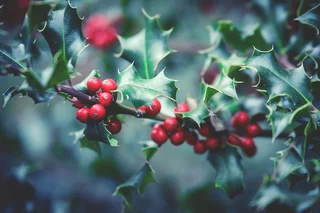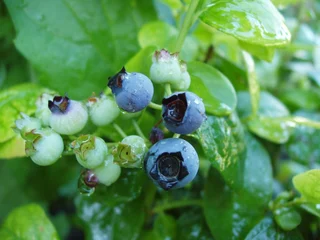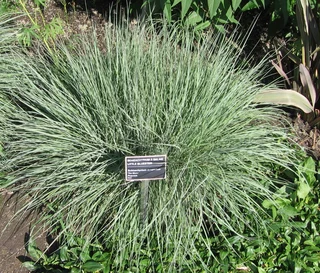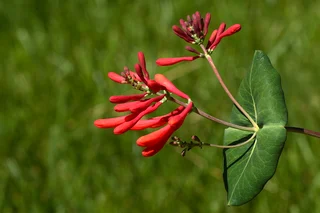If your landscape isn’t home to at least a few native plants, you’re missing out.
Natives are hot, for a lot of reasons.
Here in the Triangle area, we have some beauties. Passion flower. Virginia Sweetspire. Purple beautyberry even has “beauty” in its name.
But we’re getting ahead of ourselves. (We get excited about stuff like this.)
Brian Holden, Greenscape, Inc. client relations manager, shares some of his favorite native trees, perennials, shrubs, grasses and vines for the Raleigh area.
You’ll want some of these. We promise.
First, What’s All The Fuss About Natives?
Native plants are more popular than ever, and it’s no surprise why they’re the current “it” plants.
They’re hardy, so they fend off pests and diseases. Native plants usually need less water, once they’re established. And, when you plant natives, you’re helping out nature’s wild creatures by providing berries and seeds, layers of great shelter and nectar for pollinators.
Provide the best layers of shelter by choosing different types of native plants. Include grasses, perennials, vines and trees to offer perfect cover for birds.
Non-native plants can quickly become invasive, crowding out the beneficial plants that animals and birds need for survival.
Convinced? Now, the fun part. Here are some of Holden’s favorites.
The Best Native Trees For Raleigh

— American Holly. This great native grows wild in the North Carolina woods and up and down the east coast. The pretty woodland evergreen boasts red berries that bluebirds love, Holden says.
“You can see bluebirds feeding on them through the later winter months, when most other food sources have been exhausted,” he says.
Who doesn’t want to help bluebirds survive?
— Flowering Dogwood. Holden loves this tree, and he’s obviously not alone. It’s the North Carolina state flower. Good for woodland gardens and shaded spots, this dogwood is a favorite of birds, too. If your spot is on the sunny side, look for one of the newer hybrid varieties that offer more sun tolerance, Holden suggests.
The Best Native Shrubs For Raleigh
— American Beautyberry lives up to its name. Lovely clusters of purple berries appear in the fall, providing a tasty buffet for birds. Plan on welcoming some black-throated blue warblers — the little songbird migrates through North Carolina every spring and fall. And those clusters of bright, tasty berries are a treat for the hungry warblers.
Beyond berries, this native shrub offers clusters of pink flowers in June and July.
— Winterberry holly. This is a deciduous holly, so unlike other types, it drops its leaves in the fall. But that’s OK — all the better to admire its striking red berries, each about a quarter inch in diameter.
The showy berries hang on all winter, a nice cheerful addition to the winter landscape.
— Virginia Sweetspire. Arching, willow-like branches and cylinders of fragrant, tiny white flowers make this native shrub a pretty addition to the landscape. It typically grows 3 to 4 feet tall and about the same size across. Its dark green oval leaves turn gold, red and orange in the fall. And its pretty leaves often hang on until early winter.

— Highbush and lowbush blueberry. Yes, the big difference between these two blueberry plants are their size. Highbush grows so tall you might have to look up at it, while lowbush, also called wild blueberry, stays about knee high.
The good news is, they both produce delicious blueberries, one of nature’s superfoods. The wild blueberries are smaller, but many say they’re sweeter.
The leaves of highbush blueberry offer a fiery blaze of color in the fall. In spring, you’ll see clusters of white or pink blossoms.
How about strolling outside at lunch and plucking a handful of juicy berries to go with your sandwich? We thought you’d like this idea.
The Best Native Perennials For Raleigh
— Christmas Ferns. This native fern with the festive name stays green right through the holiday season. Enjoy its glossy, green fronds all year.
The fronds grow in clusters and are a foot or two long. Christmas ferns like cool, moist, well-drained soil in shade.

— Tiarella (pictured), commonly known as foam flower. Its semi-glossy, heart-shaped leaves may have pretty reddish variegation along the veins. In mild winters, the foliage hangs on, after turning reddish bronze in autumn. Tiny white flowers appear in spring and last for about 6 weeks.
— Creeping phlox. This native perennial forms a mat of pale bluish purple in the spring, blanketing the ground with delicate flowers. It spreads quickly to cover large areas, so this phlox works great as a ground cover.
— Butterfly weed. A staple in any butterfly garden, these bright yellow and orange flowers bloom for a nice long time, from late spring right through the summer. While the flowers provide nectar for many types of butterflies, the leaves are food for monarch butterfly caterpillars.
This native happily grows in dry to medium soil in full sun and is drought tolerant. But it doesn’t transplant well, so once it’s planted, try to leave it undisturbed.
—Ironweed. This striking purple native flower is prettier than its name implies. It’s named for its tough stem, but atop its tall straight stem is a blaze of color.
“It looks amazing in meadows when the whole field glows purple,” Holden says.
Butterflies love it. Ironweed is a host plant for the American Painted Lady butterfly. Fluffy seed heads add nice texture into fall and winter.
The Best Native Grasses For Raleigh

— Big and Little Bluestems. These grasses are native to the prairies of North America. If your property boasts a meadow-type setting, Holden recommends this native perennial with lovely coppery bronze winter color.
Little bluestem grows to about 2 to 3 feet high, then sends up taller flowering stalks in July. Big bluestem can reach 8 to 9 feet high.
Small property? Then this one isn’t for you.
“They’re really only good for meadow settings,” Holden says, “as they’ll spread too much in a garden bed.”
The Best Native Vines For Raleigh

— Trumpet honeysuckle. “This is the orange and red variety that’s a favorite of hummingbirds and hummingbird moths,” Holden says. “It’s native — unlike the white and yellow Japanese honeysuckle, which is invasive and not native.”
To be sure, look for it by its Latin name, Lonicera sempervirens.
This vigorous, twining vine typically grows 10 to 15 feet high and is one of the showiest of the vining honeysuckles.
Large, narrow, trumpet-shaped flowers are scarlet to orangish-red on the outside and yellowish inside. Flowers appear in late spring, followed by small red berries that birds love.
— Passion flower. This intricate, exotic-looking native grows in every county in North Carolina, often thriving along the edges of forests. The blooms — purple and white with an intricate array of wispy stamens and exotic markings — usually appear in June through September, with pods following in the fall. The vine grows to about 25 feet and will run across the ground, or climb an arbor or fence, if you provide one.
The Best Native Plants For Raleigh? Just Ask Greenscape
At Greenscape, Inc., we love native plants as much as the birds and butterflies do. Hardy, lovely, environmentally friendly — they’re a win-win-win on your property.
Let us find the perfect specimens for your property, and we know you’ll love them, too.
We’ve been meeting the full-service landscaping needs of commercial customers in the Raleigh, Durham, Chapel Hill and Cary areas for more than 35 years.
We offer landscape management and lawn care, design and build services, irrigation, landscape lighting and more.
Call us at 919-552-7742 or fill out our online form to request a free consultation and learn how we can transform your landscape.
We can’t wait to hear from you.
